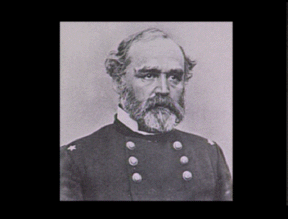![]()

Born in 1816 in Augusta, Georgia, M. C. Meigs moved as a child with his family to Philadelphia. He first enrolled at the University of Pennsylvania, but then entered the United States Military Academy, from which he was graduated in 1836, fifth in his class. Following his graduation, he entered the army's engineering corps, where over the next twenty-five years, he demonstrated his considerable abilities. He supervised the construction of the Washington Aqueduct, which carried a large part of the city's water supply from the Great Falls of the Potomac. He also oversaw the construction of the wings and dome of the national Capitol, and the extension of the Post Office Building.
It was while working on these projects that Lincoln and Seward called upon him to help draw up a relief plan for Fort Pickens. In addition to his special training, abilities, and experience, Meigs's advice had weight with Lincoln. Meigs had recently visited the other federal posts in Florida, and was considered a military man "who would not talk politics."
During the Civil War, Meigs eventually rose to the rank of major general. As quartermaster general of the army, he was in charge of disbursing hundreds of millions of dollars. He personally supervised the refitting and supplying of Sherman's army at Savannah, and later, in North Carolina where Sherman's lines of supply were reopened. Seward once remarked that without Meigs's brilliant service, the "national cause must have been lost or deeply imperiled."
After the war, Meigs returned to supervising the construction and planning of national buildings and sites, including the National Museum. He retired in 1882, but continued active as a regent of the Smithsonian Institution, a member of the American Philosophical Society, and the National Academy of Sciences. He died in Washington, D.C., in 1892.